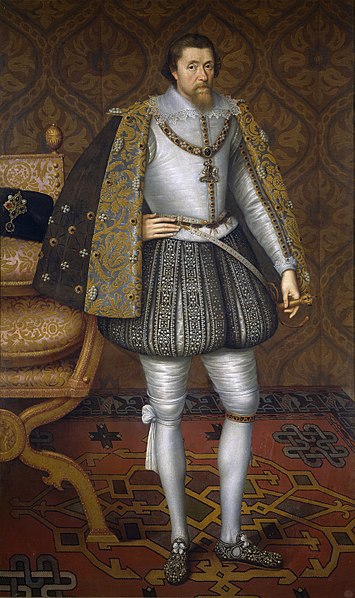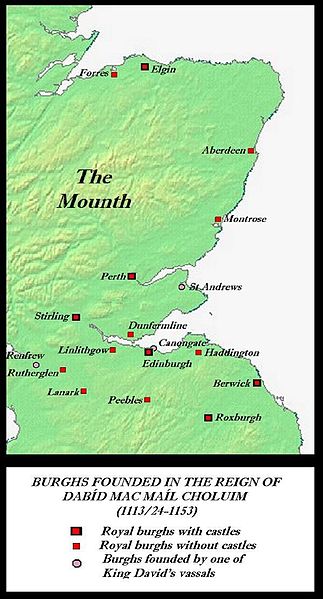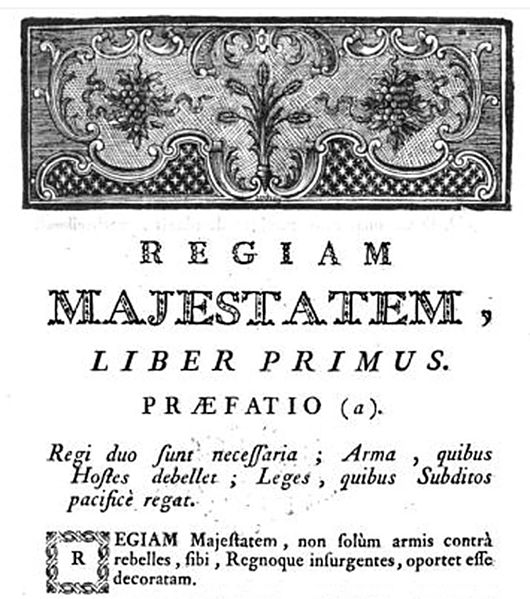The Davidian Revolution is a name given by many scholars to the changes which took place in the Kingdom of Scotland during the reign of David I (1124–1153). These included his foundation of burghs, implementation of the ideals of Gregorian Reform, foundation of monasteries, Normanisation of the Scottish government, and the introduction of feudalism through immigrant Norman and Anglo-Norman knights.
Steel engraving and enhancement of the obverse side of the Great Seal of David I, portraying David in the "European" fashion of the otherworldly maintainer of peace and defender of justice.
Duffus Castle, possibly begun by Freskin, one of David's most successful small scale military immigrants.
Silver penny of David I.
Burghs established in Scotland before the accession of David's successor and grandson, Máel Coluim IV; these were essentially Scotland-proper's first towns.
The Kingdom of Scotland was a sovereign state in northwest Europe traditionally said to have been founded in 843. Its territories expanded and shrank, but it came to occupy the northern third of the island of Great Britain, sharing a land border to the south with the Kingdom of England. During the Middle Ages, Scotland engaged in intermittent conflict with England, most prominently the Wars of Scottish Independence, which saw the Scots assert their independence from the English. Following the annexation of the Hebrides and the Northern Isles from Norway in 1266 and 1472 respectively, and the capture of Berwick by England in 1482, the territory of the Kingdom of Scotland corresponded to that of modern-day Scotland, bounded by the North Sea to the east, the Atlantic Ocean to the north and west, and the North Channel and Irish Sea to the southwest. In 1603, James VI of Scotland became King of England, joining Scotland with England in a personal union. In 1707, during the reign of Queen Anne, the two kingdoms were united to form the Kingdom of Great Britain under the terms of the Acts of Union.

James VI, whose inheritance of the thrones of England and Ireland created a dynastic union in 1603
Coronation of Alexander III of Scotland at Scone Abbey; beside him are the Mormaers of Strathearn and Fife while his genealogy is recited by a royal poet.
The Regiam Majestatem is the oldest surviving written digest of Scots law.
Institution of the Court of Session by James V in 1532, from the Great Window in Parliament House, Edinburgh








